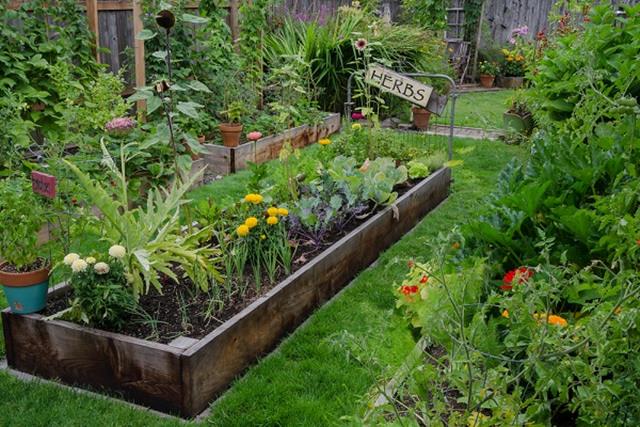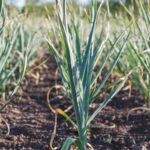Are you interested in starting a vegetable garden but don’t have a lot of space? Vegetable gardening in a raised bed might be the perfect solution for you.
Raised bed gardening is a popular and practical way to grow vegetables, especially for those with limited space or poor soil quality.
In this article, we will explore the benefits of vegetable gardening in a raised bed, how to choose the right location for your raised bed, building and preparing your raised bed, selecting the best vegetables, planting and caring for your vegetables, managing pests and disease, harvesting your crop, and some tips and tricks for successful vegetable gardening in a raised bed.
Raised bed gardening involves growing plants in soil that is higher than the ground level. This method has gained popularity among both novice and seasoned gardeners due to its numerous benefits. From better drainage to easier soil amendment, there are many advantages to using raised beds for vegetable gardening. We will delve into these benefits in detail and help you understand why this method may be ideal for your gardening needs.
Choosing the right location for your raised bed is crucial to the success of your vegetable garden. Factors such as sunlight exposure, water access, and proximity to your home should all be taken into consideration. We will provide guidance on how to evaluate potential locations for your raised bed so that you can make an informed decision on where to set up your garden.
Benefits of Vegetable Gardening in a Raised Bed
Raised bed gardening offers numerous benefits for vegetable gardening enthusiasts. One of the primary advantages is improved soil quality and drainage. By using a raised bed, gardeners can control the type and quality of soil used, leading to healthier plants and higher yields. The elevated nature of the bed also ensures better drainage, preventing waterlogging and root rot, common issues in traditional in-ground gardens.
Additionally, raised beds provide better accessibility and convenience for gardeners. The higher elevation reduces the need for bending or kneeling, making it easier to plant, weed, water, and harvest crops. This makes vegetable gardening in a raised bed an ideal option for individuals with physical limitations or limited mobility.
Furthermore, raised beds offer better pest and weed control compared to traditional gardens. The contained space reduces the likelihood of invasive weeds taking over the garden, while also making it easier to install protective barriers like row covers or netting to keep pests at bay. These benefits not only make vegetable gardening in a raised bed more manageable but also contribute to healthier and more productive plants overall.
Choosing the Right Location for Your Raised Bed
When choosing the right location for your vegetable gardening in a raised bed, there are several factors to consider in order to ensure a successful harvest. The first thing to take into account is sunlight. Most vegetables require at least 6-8 hours of direct sunlight per day, so it’s important to place your raised bed in an area that receives adequate sunlight.
In addition to sunlight, you’ll also want to consider access to water. It’s essential that your raised bed is located near a water source, as vegetables grown in raised beds typically require more frequent watering than those grown in traditional garden beds. Easy access to a water source will make it much simpler to keep your plants properly hydrated.
Another important factor when choosing the location for your raised bed is the quality of the soil. It’s best to place your raised bed on level ground with well-draining soil. If the location you have in mind has poor soil quality, you may need to amend it with compost or topsoil before beginning your vegetable gardening in a raised bed.
To ensure the success of your vegetable garden, consider these factors when choosing the right location for your raised bed. By providing adequate sunlight, access to water, and ensuring good soil quality, you’ll be well on your way to a bountiful harvest.
| Factor | Consideration |
|---|---|
| Sunlight | 6-8 hours of direct sunlight per day |
| Water Access | Near a water source for frequent watering |
| Soil Quality | Level ground with well-draining soil; may need amending if poor quality |
Building and Preparing Your Raised Bed
When it comes to vegetable gardening in a raised bed, the first step is building and preparing your raised bed. Here are some tips to help you get started:
1. Choose the right materials: When building a raised bed, you can use a variety of materials, including wood, concrete blocks, or recycled plastic. Make sure that the material you choose is durable and will not deteriorate over time.
2. Determine the size and shape: Raised beds can be any size or shape, but they are typically no wider than 4 feet so that you can easily reach into the center of the bed without stepping on the soil. The length of the bed will depend on the space available in your garden.
3. Prepare the site: Before assembling your raised bed, it’s important to prepare the site by removing any grass or weeds. You may also want to consider laying down landscape fabric to prevent weeds from growing up into your raised bed.
Once you have built and prepared your raised bed, you can fill it with a mixture of soil and compost to create a fertile growing environment for your vegetables. Building a raised bed may seem daunting at first, but with careful planning and preparation, it can be a rewarding experience that will set you up for successful vegetable gardening in a raised bed.
Selecting the Best Vegetables for Raised Bed Gardening
When it comes to selecting the best vegetables for raised bed gardening, there are several factors to consider. The limited space of a raised bed means that you’ll want to choose plants that will thrive in a compact environment and also complement each other in terms of growth habits and nutritional needs.
Here are some top choices for vegetables that are well-suited for raised bed gardening:
- Tomatoes
- Carrots
- Cucumbers
- Radishes
- Lettuce
Tomatoes are an excellent choice for raised beds as they can be trained to grow upwards with the help of stakes or trellises, saving valuable ground space. Carrots and radishes have shallow root systems, making them ideal for the shallower soil of a raised bed. Cucumbers can also be trained to grow upwards, while lettuce is quick-growing and can be easily interplanted with other crops.
It’s important to consider the mature size of each plant when choosing vegetables for your raised bed. Some plants may end up shading out others if they grow too large, so it’s essential to plan accordingly when deciding what to plant. Additionally, rotating your crops each season can help prevent disease and nutrient depletion in the soil, making your vegetable garden in a raised bed more sustainable in the long run.
Planting and Caring for Your Vegetables
Once you have built and prepared your raised bed, it’s time to start planting your vegetables. When it comes to vegetable gardening in a raised bed, proper spacing is crucial. Be sure to follow the spacing recommendations on the seed packets or plant tags to ensure that your vegetables have enough room to grow. Overcrowding can lead to stunted growth and increased susceptibility to pests and diseases.
In addition to proper spacing, it’s important to pay attention to the specific needs of each type of vegetable you are planting. Some may require more sunlight, while others prefer partial shade. Make sure to group together vegetables with similar light and water requirements to optimize their growth.
Caring for your vegetables in a raised bed also involves regular watering and fertilizing. Since raised beds typically drain well, they may require more frequent watering, especially during hot summer months. Adding a layer of organic mulch can help retain moisture and reduce the frequency of watering. Furthermore, using a balanced fertilizer can provide essential nutrients for healthy plant growth.
Finally, keep an eye out for any signs of pests or disease on your vegetables. Be proactive in managing these issues by regularly inspecting your plants and taking appropriate measures such as handpicking pests or using organic pesticides when necessary.
| Vegetable | Spacing (Inches) |
|---|---|
| Tomatoes | 24-36 |
| Lettuce | 6-18 |
| Zucchini | 36-60 |
Managing Pests and Disease in Raised Bed Gardening
Identifying Common Pests and Diseases
One of the key challenges in vegetable gardening in a raised bed is managing pests and disease. Common pests that can wreak havoc on your vegetables include aphids, caterpillars, and mites. Additionally, diseases such as powdery mildew and blossom end rot can quickly spread among your plants if not properly addressed. It’s important to be able to identify these pests and diseases early on in order to take appropriate action.
Natural Pest Control Methods
Fortunately, there are several natural methods for managing pests and disease in raised bed gardening. For example, introducing beneficial insects such as ladybugs and lacewings can help control pest populations. Additionally, practicing crop rotation and interplanting different vegetables can disrupt the life cycle of pests and reduce the risk of disease spread. Using organic pesticides sparingly can also be effective in controlling pest outbreaks without harming beneficial insects or the environment.
Maintaining Good Garden Hygiene
In order to prevent the spread of disease in your raised bed garden, it’s crucial to maintain good garden hygiene. This includes regularly removing any diseased or infested plant material from your garden, as well as keeping the area around your raised bed free from weeds and debris. Proper watering techniques, such as watering at the base of plants rather than overhead, can also help prevent the development of certain diseases like powdery mildew.
By being vigilant about identifying potential issues early on, implementing natural pest control methods, and maintaining good garden hygiene practices, you can effectively manage pests and disease in your vegetable gardening in a raised bed.
Harvesting and Enjoying the Fruits of Your Labor
Knowing When to Harvest
When it comes to vegetable gardening in a raised bed, knowing when to harvest your crops is crucial. Different vegetables have different indicators for when they are ready to be harvested.
For example, root vegetables like carrots and radishes can be gently pulled from the soil when they have reached the desired size, while tomatoes should be picked when they are fully colored and slightly soft to the touch. It’s important to research each vegetable variety you’ve planted in order to determine the best time for harvesting.
Enjoying Your Homegrown Produce
One of the most satisfying aspects of vegetable gardening in a raised bed is getting to enjoy the fruits of your labor. There’s something incredibly gratifying about eating produce that you’ve grown yourself.
Whether you’re making a salad with freshly-picked lettuce and cucumbers, or enjoying a pasta dish made with homegrown tomatoes and basil, savoring the flavors of your own garden is truly rewarding. You can also share your bounty with friends and family, or preserve excess harvests by canning or freezing them for later use.
Extend Your Harvest Season
Another benefit of raised bed gardening is that it can help extend your harvest season. By carefully planning which vegetables you plant and when you plant them, you can stagger your harvests so that you have a continuous supply of fresh produce throughout the growing season.
This means you can enjoy homegrown veggies for a longer period of time, rather than being overwhelmed by a large harvest all at once. Plus, with proper care and attention, raised beds can often provide an extended growing season into the fall, allowing for even more enjoyment of your homegrown bounty.
Tips and Tricks for Successful Vegetable Gardening in a Raised Bed
In conclusion, vegetable gardening in a raised bed offers numerous benefits and can be a rewarding experience for gardeners of all skill levels. With the right location, proper preparation, and careful selection of vegetables, you can create a thriving garden that produces an abundance of fresh produce. By following the tips and tricks outlined in this article, you can increase your chances of success and enjoy a bountiful harvest.
One of the key advantages of raised bed gardening is the ability to control soil quality and drainage, leading to healthier plants and higher yields. Additionally, the elevated nature of raised beds can make them more accessible for individuals with physical limitations, making gardening a possibility for a wider range of enthusiasts. With thoughtful planning and attention to detail, you can create a sustainable and vibrant vegetable garden in your own backyard.
Incorporating raised bed gardening into your outdoor space allows for greater flexibility in plant selection and efficient use of resources. By implementing the advice provided in this article, you can overcome common challenges such as pest management and disease prevention to ensure that your vegetables thrive. Whether you are an experienced gardener or just starting out, utilizing raised beds for vegetable gardening can enhance your overall success and enjoyment of this fulfilling pastime.
Frequently Asked Questions
What Vegetables Are Good to Grow in a Raised Bed?
Vegetables that are good to grow in a raised bed include tomatoes, peppers, lettuce, spinach, carrots, radishes, and herbs like basil and cilantro. These crops thrive in the well-draining soil and warm temperatures of a raised bed.
What Vegetables Should Not Be Grown in a Raised Bed?
Certain vegetables should not be grown in a raised bed, such as corn, pumpkins, and squash. These plants require more space for their roots to spread out, which may be limited in a raised bed. Additionally, tall or vining plants can shade out other crops in a raised bed.
What Do You Put in the Bottom of a Raised Vegetable Bed?
In the bottom of a raised vegetable bed, it’s important to put down a layer of cardboard or newspaper to smother any existing weeds or grass. On top of this barrier, add a mixture of compost, peat moss or coconut coir, and perlite or vermiculite to provide good drainage and nutrient-rich soil for the vegetables to grow in.

If you’re looking to get into vegetable gardening, or are just looking for some tips on how to make your current garden better, then you’ve come to the right place! My name is Ethel and I have been gardening for years. In this blog, I’m going to share with you some of my best tips on how to create a successful vegetable garden.





